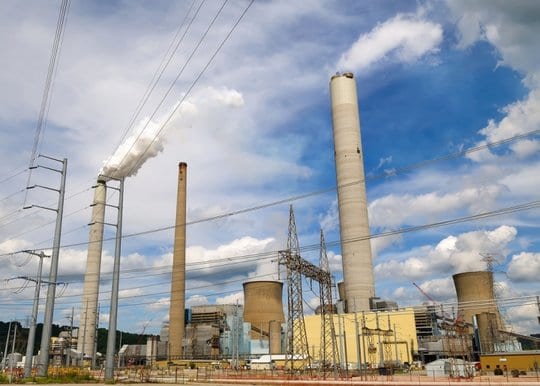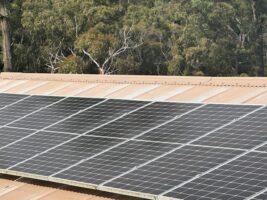New standards are to be imposed on all new generation in South Australia as regulatory authorities scramble to ensure that the network remains stable, and amid increasing and significant concerns about the performance standards on existing, synchronous, fossil fuel generators.
While some media, such as the ABC and the Murdoch press, chose to focus on wind farms, the new standards to be announced by AEMO in South Australia will affect all new generation, be they wind, solar, gas or large-scale storage.

But these form just part of the overall challenge facing the Australian grid. Renewables are being widely blamed for bringing instability to the grid, but the renewables industry is fighting back, saying the state of the incumbent fossil fuel generators is actually the key issue.
They point, for example, to relaxed settings on coal and gas generators, which may mean that they can no longer deliver the grid security services expected of them, and admissions by AEMO that it had no idea of key settings on fossil fuel generators installed before 2007.
A major new study presented to the Finkel review expresses deep fears about the stability of the grid, noting that during the recent heat-wave in coal-reliant NSW, there appeared to be no frequency control supplied within the state.
That left it in a perilous state, the report says, and close to a catastrophic blackout or “system black.”
In its submission, leading wind farm developer Tilt Renewables says the state of Frequency Control Ancillary Services, or FCAS market (which controls and also restores frequency after major disturbances), has left the grid unstable because fossil fuel generators get penalised if they try to control frequency more accurately.
It cited this graph above, which shows the change in frequency distribution from 15 years ago to the present. “Where there used to be a small standard deviation around 50 Hz, there is now a much wider response. This indicates that there is a much weaker control of frequency.”
How did this happen?
“The weaker frequency control is primarily as a result of thermal generators adjusting their frequency control settings to maximise their revenue in the frequency market. The FCAS market alone clearly does not result in good frequency control, despite the large associated costs.”
The industry cites one example when CS Energy was fined $80,000 for not following dispatch instructions because their generator control scheme had kicked in to control frequency instead.
The incident led CS Energy to relax the generators’ governor ‘deadbands’, which basically dictate how closely the generator will try to keep the frequency to 50 Hz, which ultimately led to most other generators doing the same thing.
This graph below illustrates the impacts. Firstly, there is an increase in the number of times frequency went outside of limits can be seen in 2014 (when CS Energy assumedly changed their control scheme across all 4GW of their generation portfolio to avoid future fines), then a second major increase occurred in the middle of 2016 (when the AER decision was made public and the rest of the NEM’s synchronous generators changed their control schemes to avoid the prospect of being fined).
Over recent years AEMO has been telling anyone who will listen that the grid, and especially frequency, is getting harder to manage because of renewables. This shows a different and far starker perspective that frequency is getting harder to manage because the NEM is designed that way.
In the meantime, renewable energy companies have been loaded with what has been dubbed “causer pays FCAS” – where FCAS costs are passed on to consumers and generators. But the FCAS market, as we highlight here, has been open to abuse, with unaccounted for surges in prices.
Another part of the recommendations from AEMO to South Australian regulator ESCOSA is on so-called ride-through mechanisms; the ability of a generator, be it thermal, wind or PV, to ride through successive changes in voltage.
This was an issue in last September’s “system black” in the state, when AEMO admitted it had no idea about the ride through mechanisms on wind farms, despite it being a major issue addressed by market operators in Europe a decade earlier. It faced a similar problem with the ride-through settings on gas generators a decade earlier.
Adjustments to the ride-through mechanisms have largely been introduced, and proved successful earlier this month when the state’s two biggest gas generators suddenly tripped, for reasons that are still unexplained, and played a key role in keeping the lights on.
The renewable energy industry says these changes are generally good, but there is concern that some aspects of the new requirements do not make sense, are unclear and may force generators to operate above and beyond the design limits of the grid.
“Basically this means they are expected to continue operating in conditions that are undefined or uncontrolled, potentially putting generators and other equipment at risk of significant damage,” says the CEC’s Tom Butler.
“This appears to be a step to transfer risk from to the generators, when the management of this risk currently sits with AEMO and the transmission businesses.”
The Clean Energy Council says the new requirements should not be onerous in terms of costs, and have largely been expected. But there are concerns about the specifics of the new proposals that make the actual impact impossible to gauge.
“The advice is very grey. In some cases there may be significant costs to meet them but having no clear definition means that it is not clear what ESCOSA would actually be asking for.
“Ramp-rate control is one example where storage may be needed to fill the gap, especially in regards to large-scale solar PV where cloud cover can change the output quickly. The scale and timing of the ramp would add high, or low costs. Having an undefined ramp provides no certainty on this cost.”
While FCAS controls can be enabled in modern renewable generators the renewable energy industry says it is a sign that the FCAS market is broken.
The market was meant to bring the capability on-line, so requiring the capability will not resolve price or availability of FCAS service issues. It says that a similar statement can be made towards AEMO’s call for all generators to assist in restoring power after a system black where a market already exists too.
The concern from the renewable energy industry is that AEMO’s revised connection standards are merely bandaid solutions that avoid resolving evident failures of the existing market arrangements.
Further, as argued by the clean energy industry in its submission to ESCOSA and the Finkel Review, these failures are a clear and present threat to power system security. It says it is important for ESCOSA, AEMO and everyone else to look at the root causes rather than propose seemingly arbitrary solutions.












